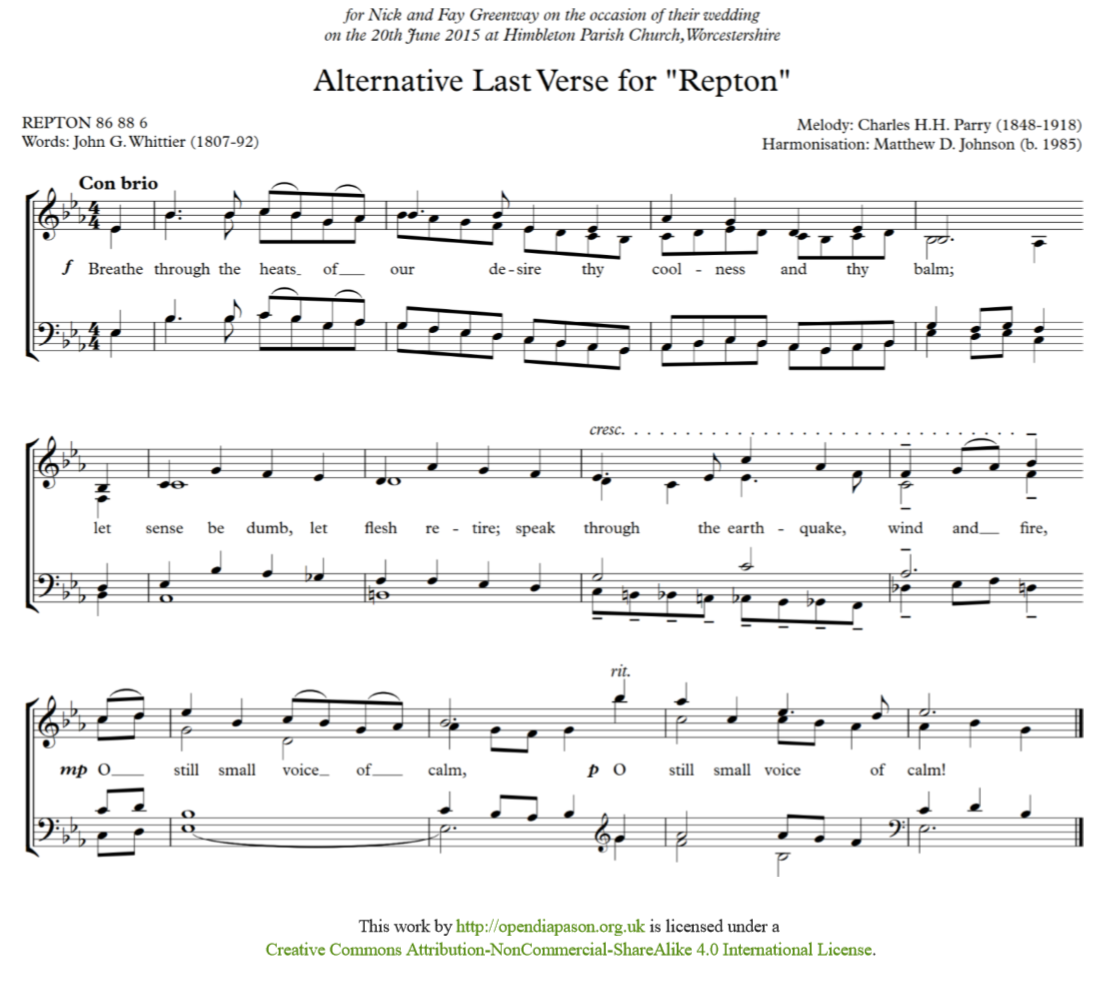Breathe through the heats of our desire thy coolness and thy balm;
let sense be dumb, let flesh retire; speak through the earthquake, wind and fire,
O still small voice of calm, O still small voice of calm.
J G Whittier
About the Composition
The text of this final stanza of the hymn “Dear Lord and Father of Mankind” is written in three pseudo-comparable phrases. These are arguably very much phrased in terms of the commonly personified forms of the Holy Spirit. The text, which has Quaker origins, is actually part of a longer poem entitled The Brewing of Soma by John Greenleaf Whittier. The story of the full text is that of Vedic priests brewing and consuming Soma (a drink that is thought to have most certainly had hallucinogenic properties) in order experience divinity. The text’s first appearance in the United Kingdom was in Garrett Horder’s 1884 edition of Congregational Hymns. Whittier ends by describing the true method for contact with the divine, as practised by Quakers: sober lives dedicated to doing God's will, seeking silence and selflessness in order to hear the "still, small voice" described in I Kings 19:11-13 as the authentic voice of God, rather than earthquake, wind or fire.
Breathe through the heats of our desire thy coolness and thy balm;
Within the opening of the final verse, heat and desire are represented through the fortitude of unison. Breath is manifest in the descending and rising harmony in the alto, tenor and bass parts (more a deep breath out and two more shallow breaths). The fact that this line starts high and ends low is itself a cooling of the initial heat of which the hymn text speaks. Coolness and balm are also evident in the parallel thirds of the harmony, and in the use of eighth notes to give a flowing and almost mellifluous, floating accompaniment.
let sense be dumb, let flesh retire;
The supplication in the text continues as a series of demands and calls for more of a return to the initial quarter note metrical nature of the music. The use of seventh chords followed by diminished chords shows an intensification as the line progresses. This line then links very quickly into the third and final phrase.
speak through the earthquake, wind and fire, O still, small voice of calm, O still, small voice of calm.
The descending chromatic scale in the bass is the earthquake and the use of Db major 7th going into the unresolved Bb dominant 7th are the wind and fire. Custom over the years has almost mandated a registration change after ‘fire’ to a much more modest orchestration painting the words with the timbre. Within this line calming starts with a return to unison before the onset of a sustained chord in the root of the key. The melody floats over the top as if a piece of plainchant. The parallel thirds in the middle cadence are a return to the initial theme in the first line, with reference to coolness and balm. The final phrase is Parry’s original harmonisation, but one octave higher – this is the stillness and consistency. The final cadence is an echo then back to the theme of gentleness that tops and tails the verse.
The tempo marking of con brio implores that this piece should be played ‘with spirit’. The text itself is very dramatic, conjuring up great amounts of imagery and life – a blank canvas for word painting.

